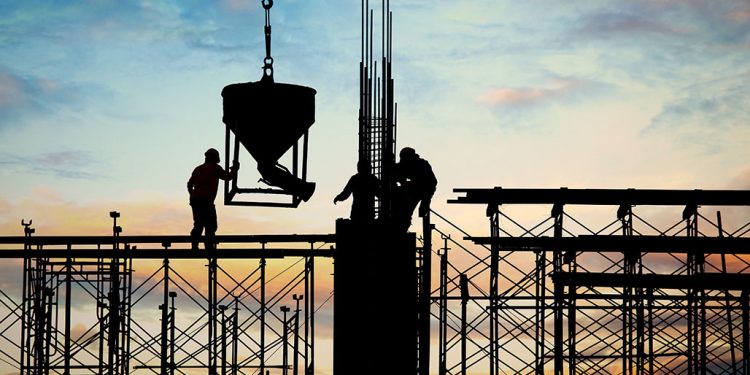Dhanada K Mishra
In the year 1968, the Governor of New York State, Nelson Rockefeller, received a proposal – for a new subway line called the Second Avenue Subway. Four years later, a ground-breaking ceremony was held but the project was stalled. Years later, a new Governor, Mario Cuomo, tried to restart it. But once again, the budget would not allow. It came to be known as “the most famous thing that’s never been built in New York City.” The first leg of it was finally completed in 2016. The current Governor Andrew Cuomo took a celebratory ride in the night of December 31. He was the son of Mario Cuomo. The project had cost $4.5 billion, making it, per mile, one of the most expensive mass-transit projects in history and about $700 million over budget.
Closer home, the prestigious Bandra-Worli sea link project in Mumbai was a much-celebrated world-class infrastructure project that opened in 2009. The 5.6 km long eight-lane twin carriageway with a cable-stayed bridge at its centre was conceived almost 46 years earlier. Construction began in 2000 and was to be completed in 2004 for an estimated cost of `300 crore but was opened to the public in 2009 for a final cost of `1600 crore.
In Odisha, among many such examples, a rather infamous one would be the Khurda-Bolangir railway line. It was surveyed in 1945 but the project was sanctioned in 1994-95. The state government has signed a Memorandum of Understanding with Indian Railways to undertake some parts of the project on a cost-sharing basis. The project which was initially estimated to be `1,000 crore (US$160 million) is now estimated to be nearly `2,000 crore (US$310 million) after almost 20 years of delay due to low budgetary provisions and issues of land acquisition.
We all know of more mundane day-to-day examples of this phenomenon such as a work project, or a home renovation, even writing an article — that always go awry in terms of time and money! This phenomenon is called the planning fallacy courtesy of psychologists Danny Kahneman and Amos Tversky. Roger Buehler, a Professor of Psychology at Wilfrid Laurier University in Canada, and some colleagues set out to measure the planning fallacy. In their first experiment, they used honours students who were working on their thesis projects. The researchers asked each student to predict when they’d submit their thesis? These students took on average 55.5 days against their own predicted average of 33.9 days to finish! That’s a 64 per cent delay! Buehler and other researchers found similar evidence of the planning fallacy among stockbrokers, engineers, and doctors. They also found it in everyday activities like shopping, filing taxes, even waiting in line.
One of the major reasons behind the planning fallacy is the so-called optimism bias which is believed to be rooted in neuroscience. Experiments have repeatedly shown that the brain tends to process positive information about the future more readily than negative information and hence we tend to predict the future optimistically. Overconfidence, coordination neglect, procrastination are some of the other major contributors to planning fallacy in large projects with big teams of specialists. Digital distractions such as messages, alerts, and emails that cause continuous partial attention to tasks on hand also contribute to the delays in execution at the individual level. Employees in large companies often spend more time in meetings about work such as planning, reviewing and reporting rather than doing the actual work.
When people estimate how long a project will take, they focus too much on the specifics of that project and not enough on how long similar projects took in the past. This second approach is called reference-class forecasting. Prof Flyvbjerg of the Oxford University has estimated that infrastructure projects with a budget above $1 billion total between $6 and $9 trillion a year globally. That’s about 8 per cent of global GDP. Almost 80 to 90 per cent of all such projects have cost overruns and a similar percentage has time over-runs often in years. It led to his “iron law of megaprojects: Over budget, over time, under benefits, over and over again.” The figures for mega projects in India monitored by PMO directly, for this reason, are no better either.
One major reason other than optimism bias for planning fallacy Flyvbjerg looked into is called strategic misrepresentation. Planners are on record saying that they do this deliberately as they actually were incentivised to misrepresent the benefit-cost analysis in the business cases for their projects. Underestimating the cost and overestimating the benefits give their projects a higher chance of getting funded and getting approved. Such skewed project plans make government budgets and accounting processes go completely haywire. One approach to avoid this is to correct time and cost estimates in the other direction by using historical data for similar past projects or reference class forecasting. This is how Amazon is able to predict with close to 100 per cent accuracy the time of its delivery of parcels almost all the time. However, unlike Amazon that can use big data of millions of past deliveries, mega projects that are similar to a current one are few and far between. The governments of the United Kingdom and Denmark have shown major improvements in their project delivery in stipulated time and under approved budget in recent years using such an approach.
In the meantime, the next phase of the Second Avenue subway line in New York – another 1.5 miles, is now under construction. It’s set to cost $6 billion and open between 2027 and 2029. The remaining part of the Khurda-Bolangir railway line is also under construction. None in New York or anyone that I know in Odisha is betting on either of these projects being completed on time or under budget!
The author is an academician currently visiting Hong Kong University of Science and Technology as a Research Scholar.







































